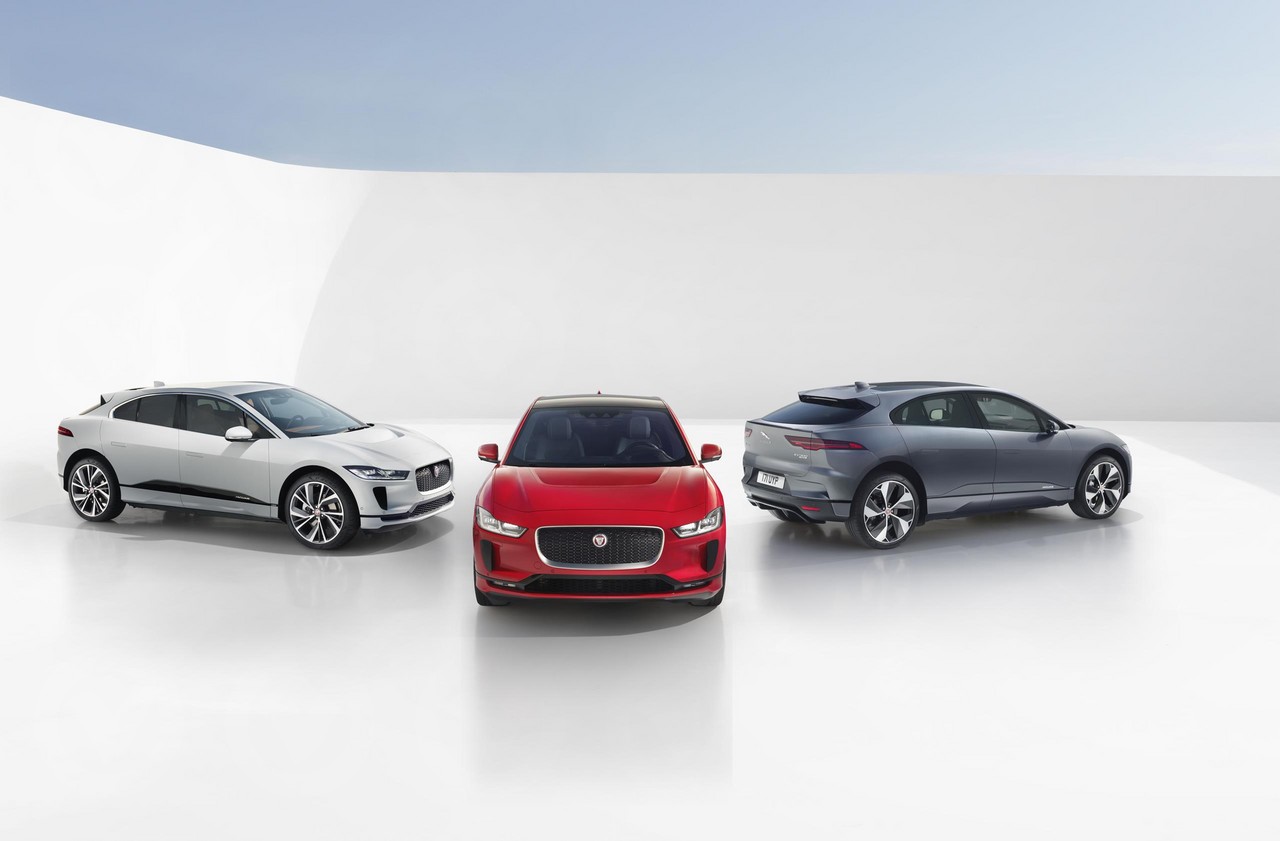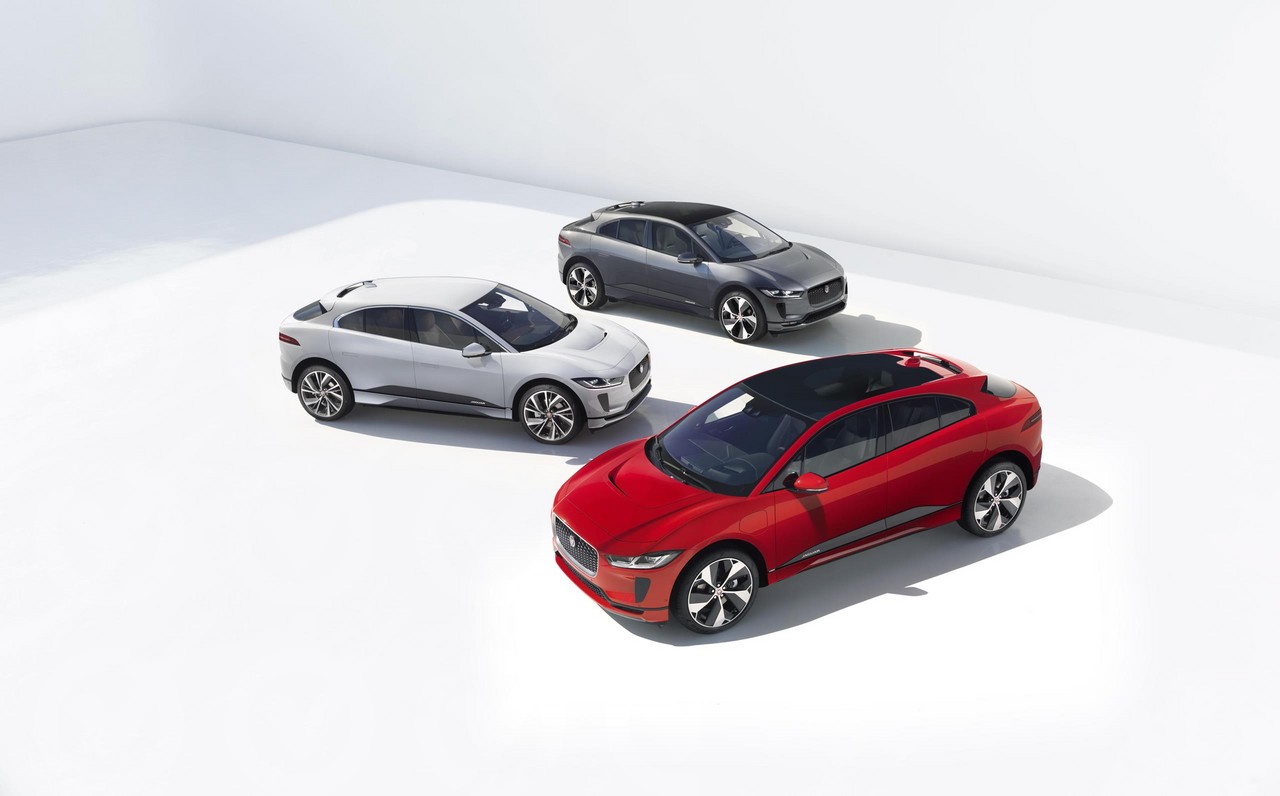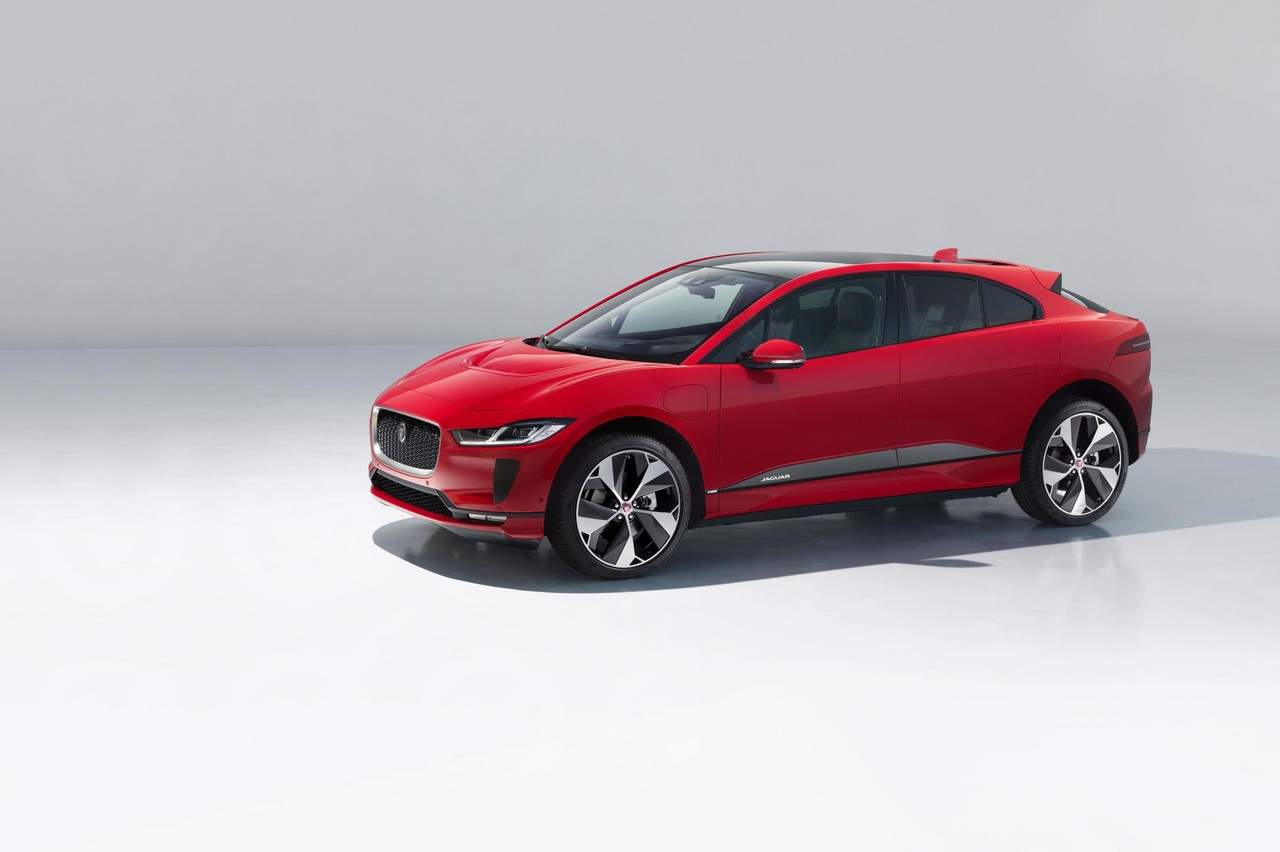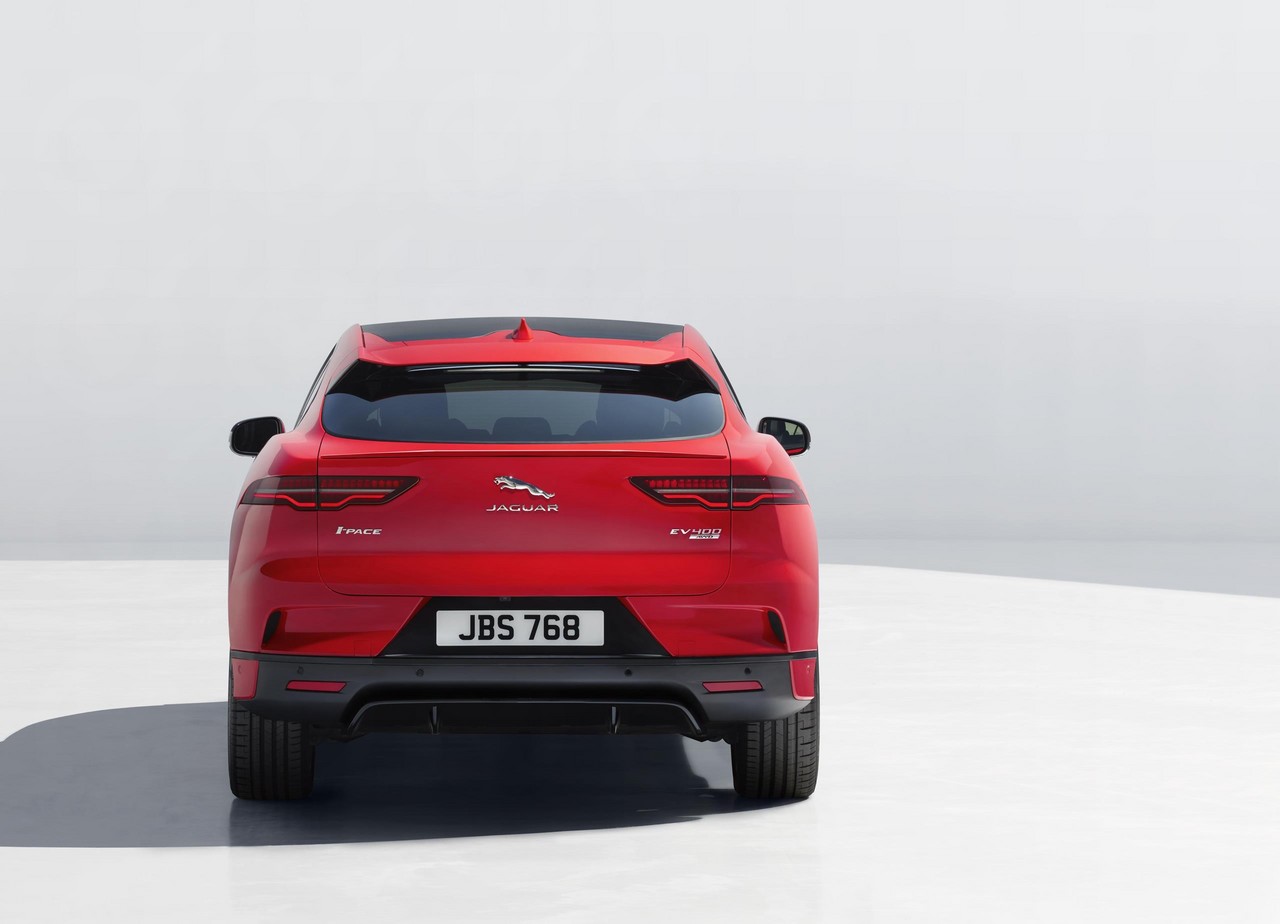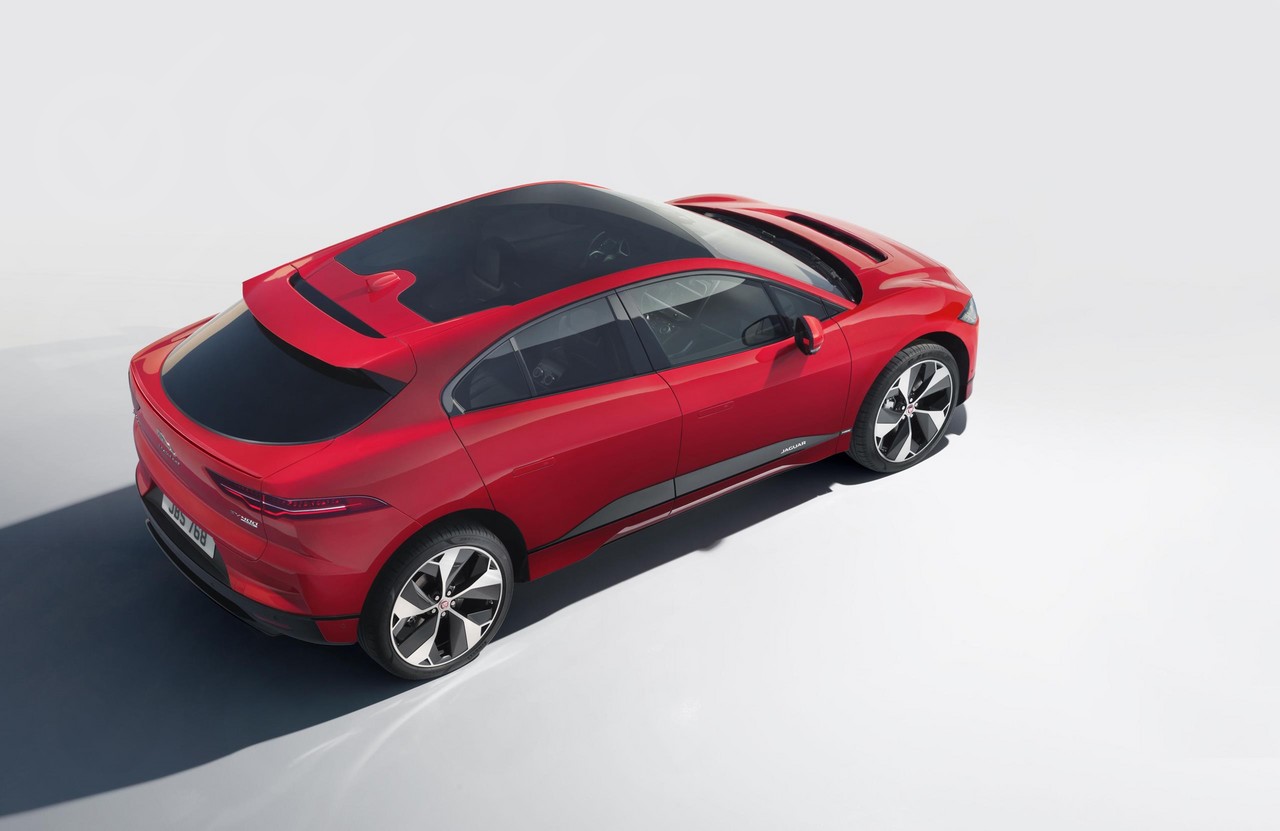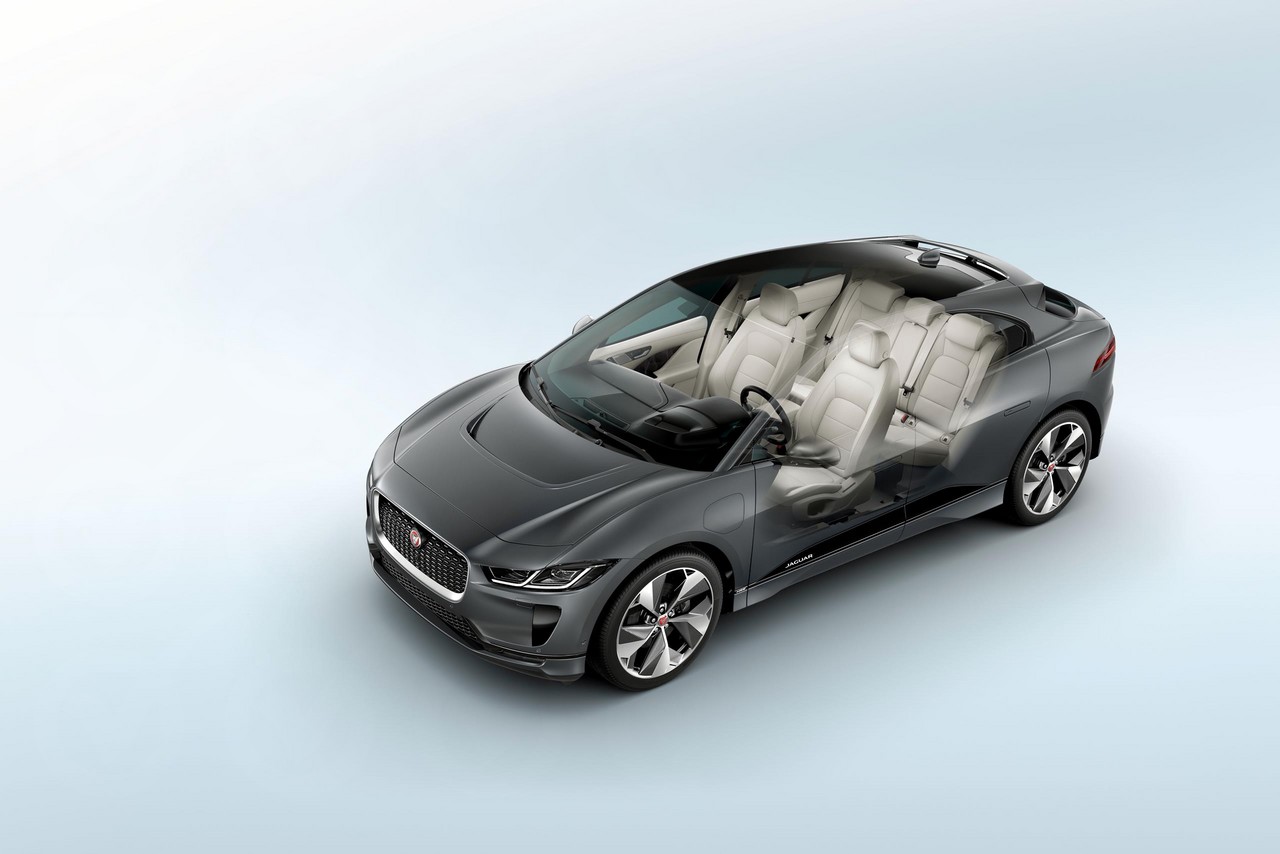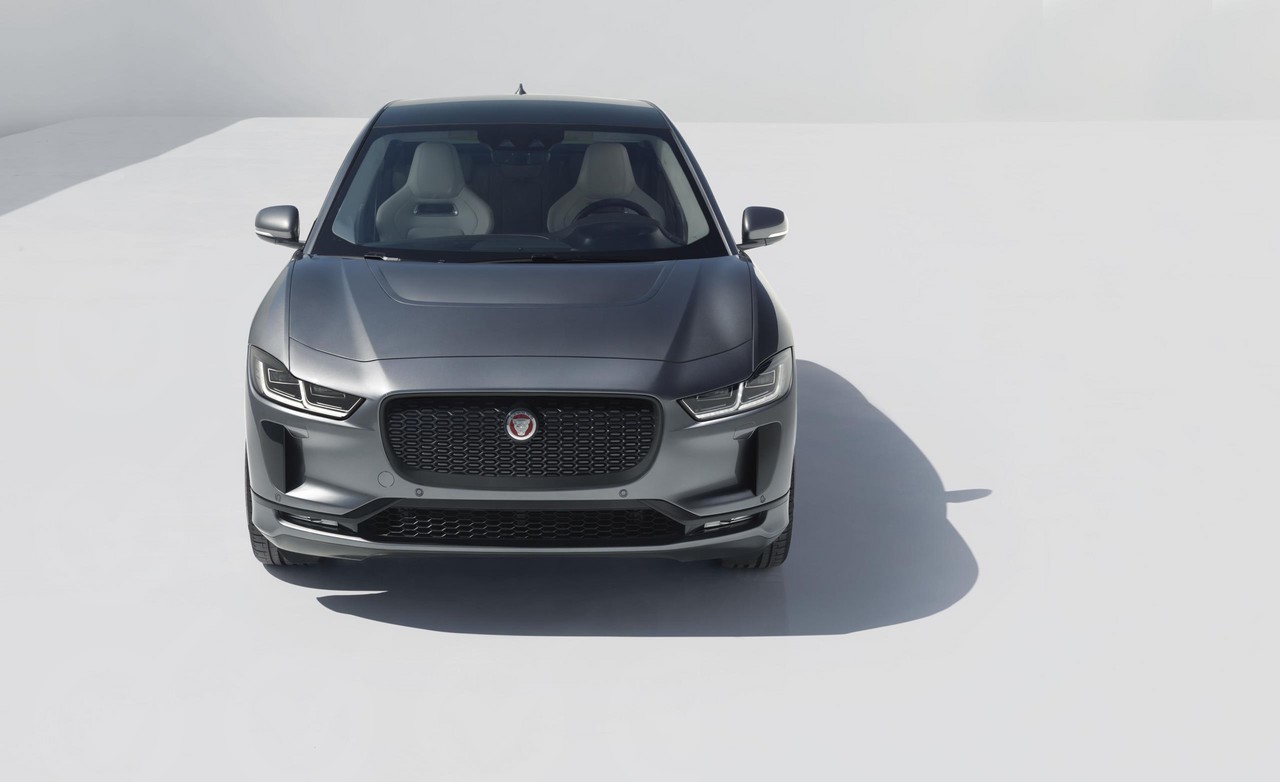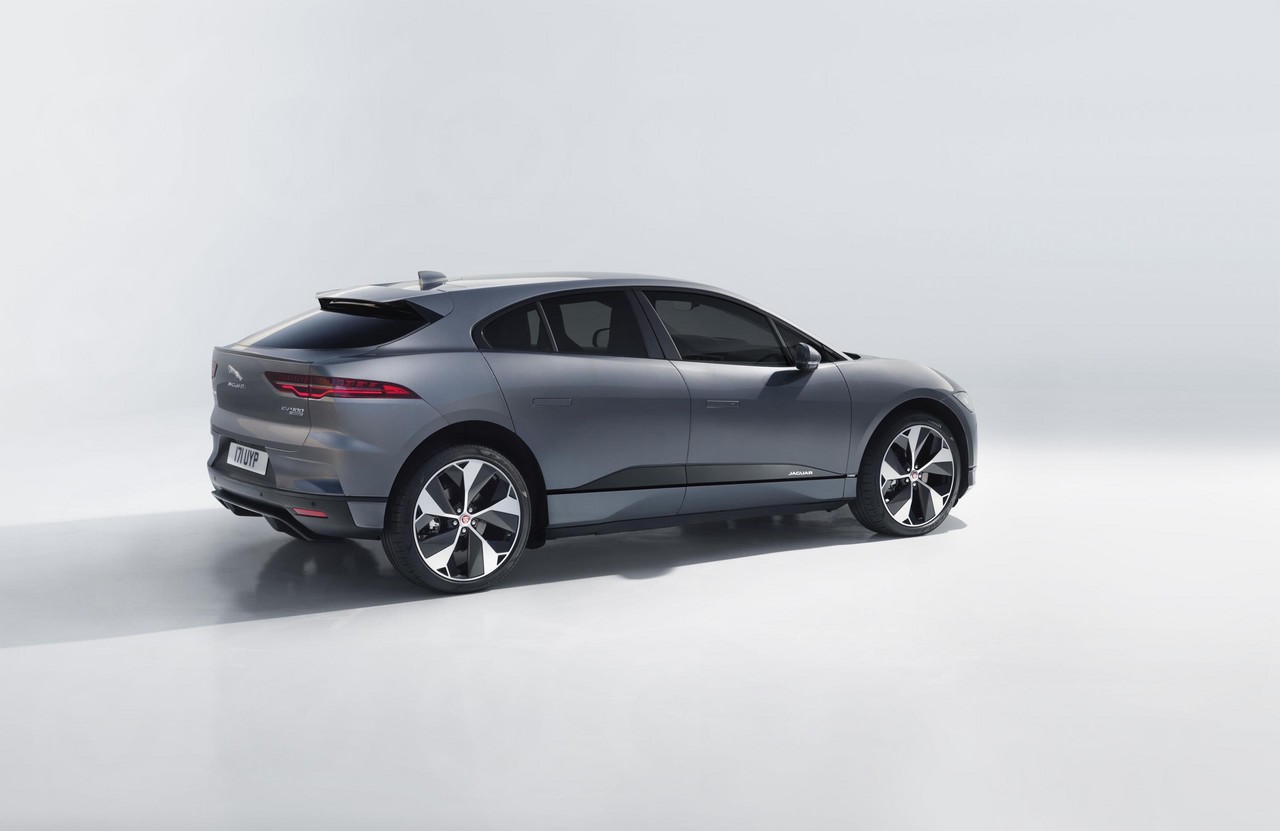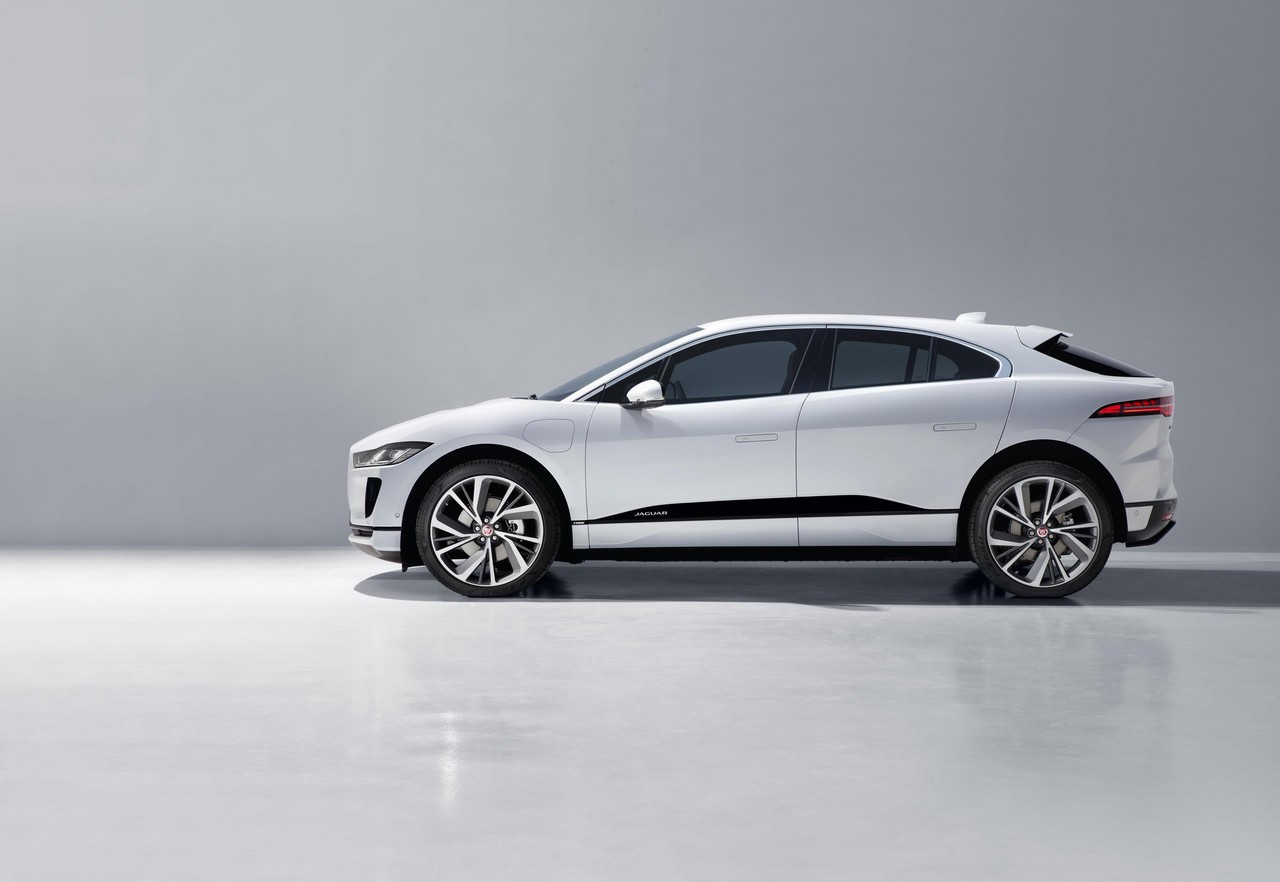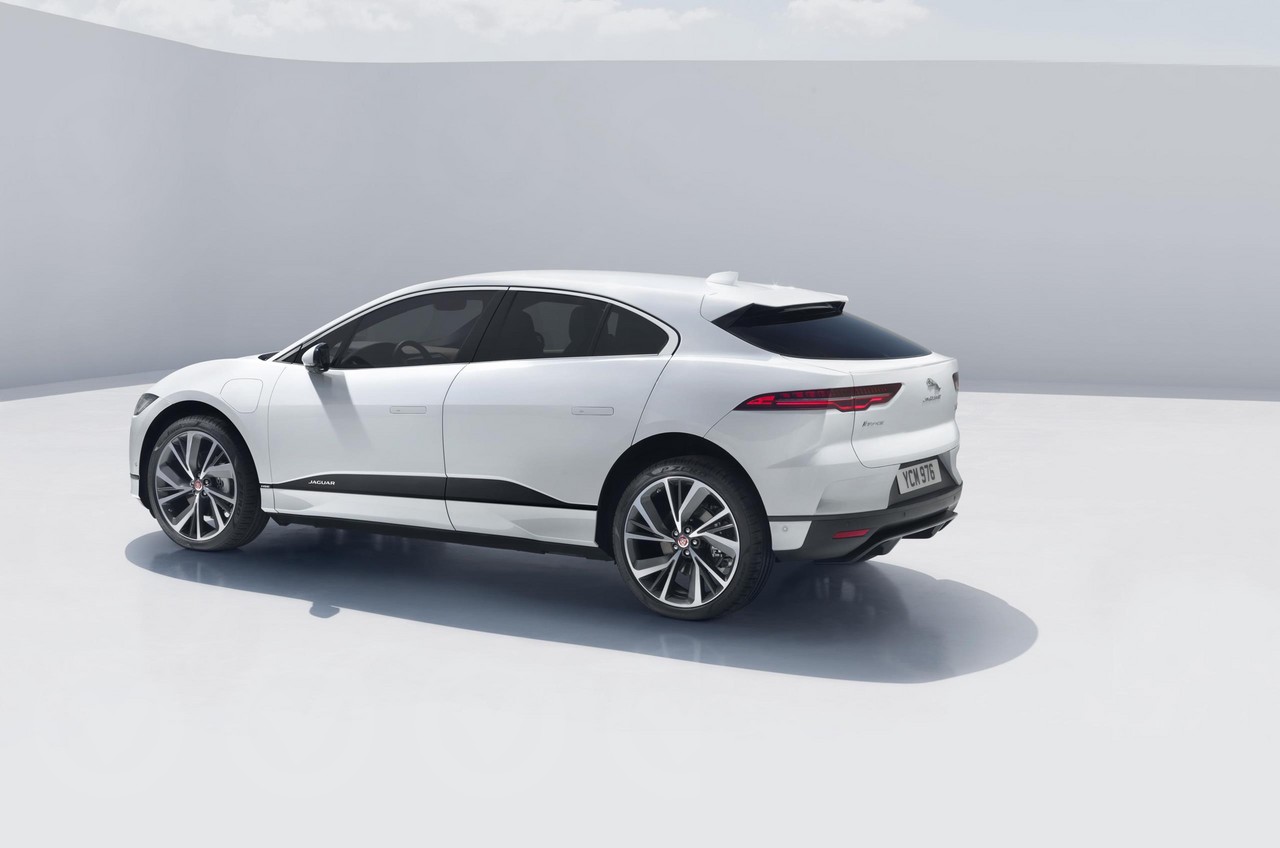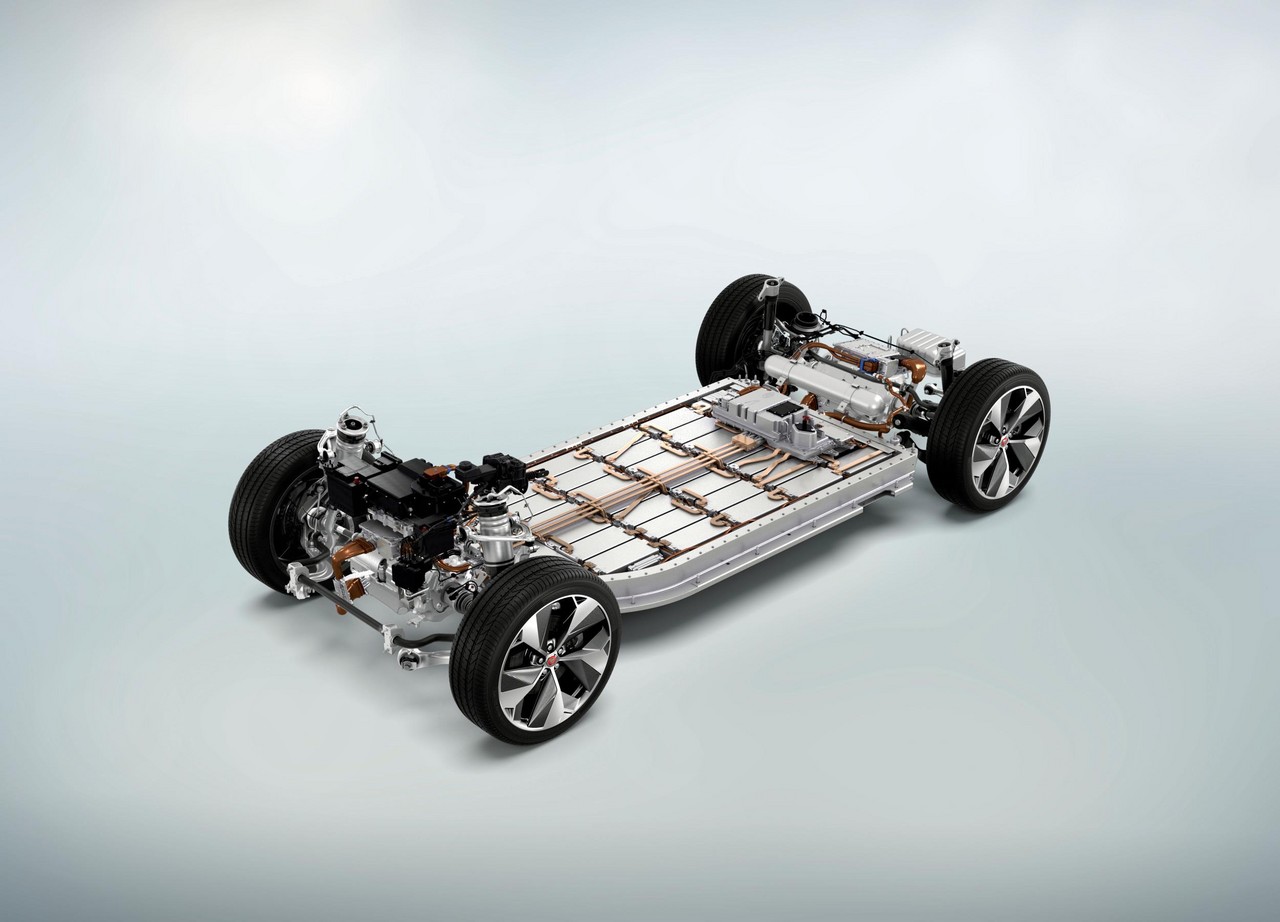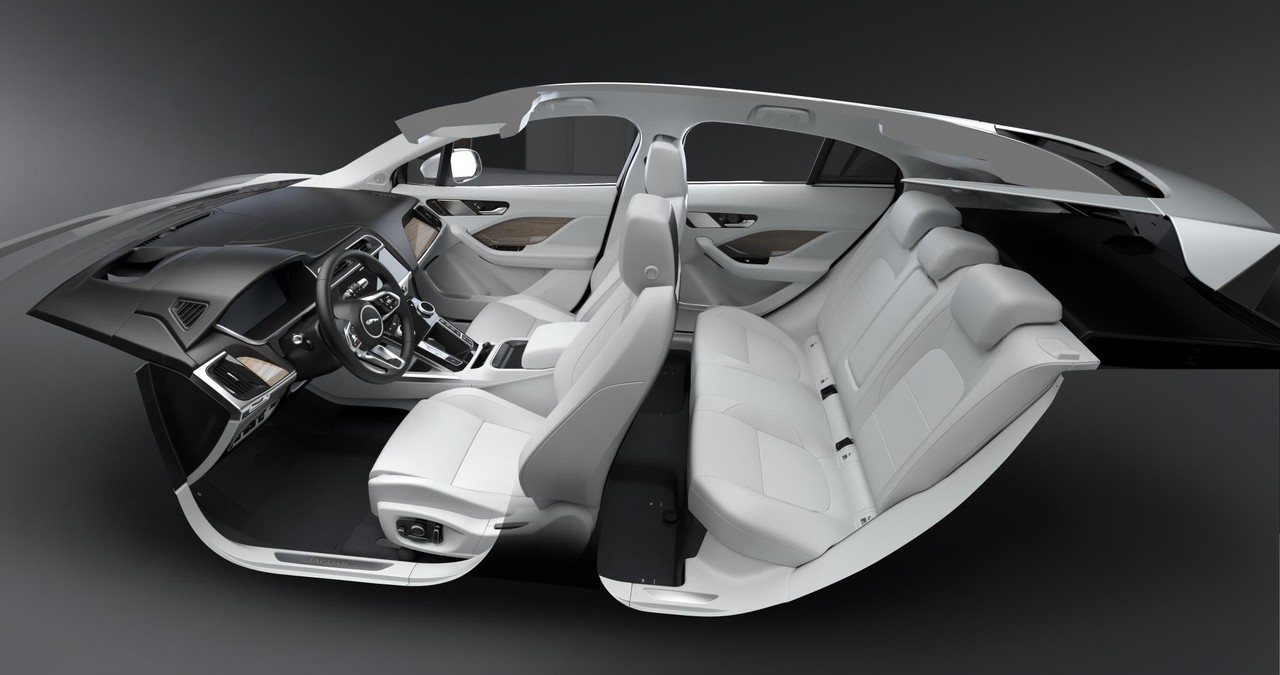
- Quiet electric motors provide impressive performance
- Well-balanced chassis
- Generally, high standard of interior fit and finish
- Well-weighted steering
- Cheaper than the Tesla Model X…
- … but still $119,000 plus on-road costs for the i-Pace S
- Infotainment system is sluggish and not intuitive
- Road noise transmitted via 20-inch alloy wheels
- Firm ride
- Electronic stability control system intervenes abruptly
- 100 kW DC charge network not available in Australia
- Heavy: Kerb weight of 2133 kg
Overview
Production of the Jaguar X590 i-Pace commenced in September 2018 and it was officially released in Australia in November 2018. Manufactured by Magna Steyr in Graz, Austria, the Jaguar X590 i-Pace was a battery-powered electric vehicle (BEV) which had a permanent magnet electric motor for each axle (i.e. one for the front and one for the rear). Each electric motor was fitted concentrically around a single-speed epicyclic transmission – which had a 9:1 reduction gear – and differential. In regular driving, the rear motor would drive the rear wheels and the front motor would provide regeneration under deceleration. For Australia, the i-Pace range consisted of S, SE and HSE editions.
The electric motors were powered by a 90 kWh, liquid-cooled LG Chem lithium-ion battery that had 432 pouch cells (rather than cylindrical cells) and reportedly comprised 40 per cent of the vehicle’s cost. The Jaguar i-Pace had a range of 480 km under the European WLTP standard. If maintaining constant highway speeds in real world conditions, however, the i-Pace had a range of 240-260 km using 90 per cent of its battery. Furthermore, the Jaguar i-Pace could accelerate from rest to 100 km/h in 4.8 seconds.
Using an AC wall box that delivered an alternating current of 7 kW, the i-Pace’s battery could be charged from flat to 80 per cent of capacity in 10 hours. For the charge network being rolled out in the UK which used 100 kW DC chargers, the corresponding charge time was 45 minutes.
| Motor | Trans. | Peak power | Peak torque |
|---|---|---|---|
| Front electric motor (permanent magent) | 1sp reduction gear (9:1) | 150 kW | 348 Nm |
| Rear electric motor (permanent magent) | 1sp reduction gear (9:1) | 150 kW | 348 Nm |
| Combined | 294 kW | 696 Nm | |
All Surface Progress Control
As standard, the Jaguar i-Pace was equipped with Jaguar’s ‘All Surface Progress Control’ (ASPC) system. ASPC could maintain vehicle speed between 3.6 km/h and 30 km/h in low traction conditions by controlling the brakes and throttle to optimise traction – this enabled the driver to concentrate on steering the vehicle.
Body and dimensions
Styled by Ian Callum, the Jaguar i-Pace had a cab-forward design. Compared to the Jaguar X761 F-Pace , the Jaguar i-Pace was 37 mm shorter (at 4694 mm), 41 mm narrower (1895 mm) and 94 mm lower (1558 mm), but had a 116 mm longer wheelbase (2990 mm); its drag co-efficient was 0.29 Cd.
According to Jaguar, the architecture of the Jaguar i-Pace had a torsional rigidity of 36 k Nm/degree. Inside, the i-Pace had a rear luggage capacity of 530 litres, though this increased to 1453 litres when the rear seats were folded down and luggage was filled to the roofline. Under the bonnet, the i-Pace also had a storage volume of 27 litres.
The LG Chem lithium-ion battery was mounted low in the body – between the front and rear axles – such that the Jaguar i-Pace had a 50:50 weight distribution. Furthermore, the Jaguar i-Pace had a kerb weight of 2133 kg.
Suspension
The Jaguar X590 i-Pace had double wishbone front suspension and integral link rear suspension. While the i-Pace was fitted with coil springs as standard, air suspension was available as an extra-cost option. At speeds above 105 km/h, the air suspension lowered the body to reduce aerodynamic drag.
As an extra-cost option, the Jaguar i-Pace was available with Jaguar’s ‘Adaptive Dynamics’ electronically-controlled dampers which monitored wheel position 500 times per second and body movements 100 times per second. In response, damping forces were adjusted to control vertical body movement, roll and pitch. Furthermore, Jaguar’s ‘Configurable Dynamics’ enabled the driver to select settings for the dampers, steering assistance, engine response and transmission behaviour.
Steering
The Jaguar i-Pace had rack-and-pinion with electric power assistance.
Safety equipment
Standard safety equipment for the Jaguar i-Pace included dual front airbags, front seat-mounted side airbags, full-length curtain airbags, ABS, electronic brake force distribution, brake assist, electronic stability control, traction control and front seatbelts with pre-tensioners and load limiters.
Standard active safety technologies for the Jaguar i-Pace included –
- Emergency Braking: used a forward-facing stereo camera – mounted behind the front windscreen – to generate a 3D view of the road up to 100 metres ahead. At speeds up to 80 km/h, this information was used to detect if a collision was imminent and, if so,
- The braking system would be pre-charged;
- The driver would receive a visual warning in the instrument cluster (and head-up display where fitted); and,
- If the driver failed to respond, autonomous emergency braking would be initiated to avoid or mitigate a collision;
- Lane Keep Assist (LKA): could return the vehicle to the centre of its lane by applying a small amount of counter-steering through the steering system. However, this steering torque could be over-ridden by the driver;
- Rear Traffic Monitor: could detect vehicles, pedestrians or other hazards approaching from either side of the vehicle when the driver was reversing out of a parking bay. If detected, the driver would be alerted via audio and visual warnings;
- Traffic Sign Recognition and Adaptive Speed Limiter: could interpret road speed signs and adjust the vehicle’s speed limiter accordingly; and,
- Driver Condition Monitoring: monitored driver behaviour for signs of fatigue and provided multi-stage warnings in the instrument panel.
The Jaguar i-Pace SE and HSE were further equipped with –
- Adaptive Cruise Control (ACC) with Queue Assist: ACC used a long-range 77 GHz radar to maintain a safe distance from the vehicle ahead with automated braking. Furthermore, Queue Assist enabled the i-Pace to accelerate from rest by tracking the vehicle ahead;
- High-speed Emergency Braking: extended the speed threshold for Emergency Braking from 80 km/h to 160 km/h; and,
- Blind Spot Assist: if another vehicle was detected in the driver’s blind spot and the driver attempted to steer into its lane, Blind Spot Assist would apply corrective steering torque to prevent the lane change. Furthermore, the driver would be alerted by a flashing LED in the corresponding door mirror.
The i-Pace HSE was distinguished by its 360 degree surround camera system which used four cameras to provide a 360 degree view of the vehicle’s surrounds, including a ‘plan view’.
Euro NCAP testing: 2018 Jaguar i-Pace
In Euro NCAP testing , the Jaguar i-Pace received a five star safety rating which included a 91 per cent adult occupant protection rating and an 81 per cent child occupant protection rating. In the frontal offset test, protection of the driver’s head and thighs were rated as good, but lower leg and foot protection were rated as adequate (i.e. a slight risk of serious injury) and chest protection as marginal (i.e. a moderate risk of serious injury). Maximum points, however, were awarded in the side impact and pole tests.
Regenerative braking and brakes
For the Jaguar X590 i-Pace, the driver can select from high or low levels of regenerative braking (which uses the kinetic energy of the wheels to drive the electric motor and generate electrical energy to recharge the battery). According to Jaguar, the driver experiences ‘intuitive single-pedal driving’ when high regenerative braking is selected since the vehicle decelerates when the driver lifts off the accelerator. Furthermore, a maximum regenerative braking force of 0.4g is achievable.
The Jaguar i-Pace had 350 mm by 32 mm ventilated front brake discs and 325 mm by 20 mm ventilated rear discs.
Features: Jaguar i-Pace S
The Jaguar i-Pace debuted Jaguar’s ‘Touch Pro Duo’ infotainment system which combines touchscreens, capacitive sensors and tactile physical controls, including:
- Two touchscreens in the centre console; and,
- 12-inch configurable LCD (Jaguar’s ‘Interactive Driver Display’) behind the steering wheel.
The standard infotainment system for the Jaguar i-Pace consisted of a Meridian Sound System, satellite navigation (‘Navigation Pro’), Bluetooth mobile phone connectivity and audio streaming, voice control, Android Auto and Apple CarPlay smartphone integration, Wi-Fi hotspot and USB connections.
Beyond this, the Jaguar i-Pace S featured 18-inch fifteen spoke ‘gloss sparkle silver’ alloy wheels, dual-zone climate control air conditioning, cruise control, eight-way power adjustable front seats, ‘Luxtec’ sport seats, LED headlights, front fog lights, rear fog light, dusk-sensing headlights, rain-sensing wipers, a rear view camera, leather steering wheel, 60:40 split fold rear seats, remote central locking with proximity key, power adjustable and heated door mirrors with auto-dimming, power windows, tilt and telescopic steering wheel adjustment, an auto-dimming rear view mirror, ambient interior lighting, illuminated vanity mirrors, tyre pressure monitoring, two 12 volt power sockets, carpet mats, a trip computer, an alarm and immobiliser.
The Jaguar i-Pace S was also equipped with –
- 360 degree parking Aid: used sensors around the vehicle to provide a virtual overhead view of the vehicle on the central touchscreen. As the driver manoeuvred the vehicle, the touchscreen would display would update and the driver would receive audio feedback to indicate the distances to obstacles; and,
- Park Assist: provided automated steering for parallel and perpendicular parking manoeuvres.
Features: Jaguar i-Pace SE
Compared to the i-Pace S, the Jaguar i-Pace SE added 20-inch six-spoke ‘gloss sparkle silver’ alloy wheels, ten-way power adjustable front seats, grained leather sport seats, ‘premium’ LED headlights with signature daytime running lights, power-operated tailgate, power folding door mirrors and driver memory settings (for the seats and door mirrors).
Features: Jaguar i-Pace HSE
The range-topping Jaguar i-Pace HSE was distinguished by its 20-inch five spoke gloss black alloy wheels, Meridian Surround Sound System, eighteen-way power adjustable front seats with ventilation, Windsor leather sport seats, heated rear seats, gesture control for the tailgate and Matrix LED headlights which could adjust light distribution patterns so that oncoming traffic would not be dazzled.
Brochure and specifications
- Brochure: Jaguar X590 iPace (August 2018)
- Specifications: Jaguar X590 iPace (April 2018)
- Specifications: Jaguar X590 iPace (February 2019)
